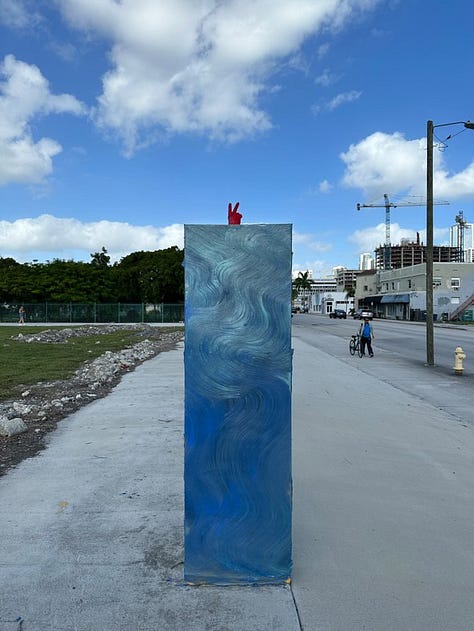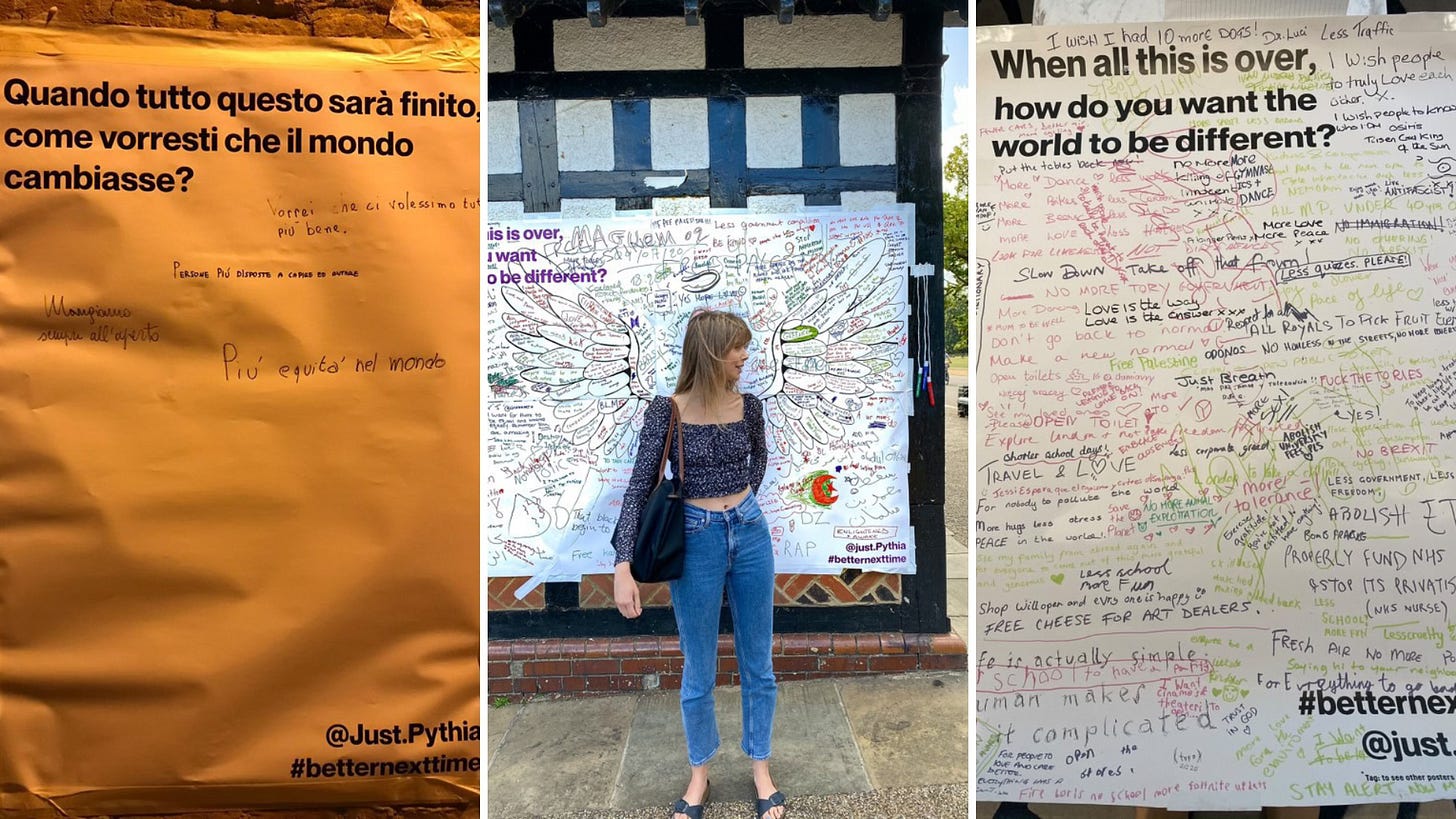Exploring Russ Jones: art, identity and the freedom of chaos
Disrupting norms and rewriting the rules of art: a deep dive into Russ Jones’ revolutionary work
Russ Jones doesn't make "safe" art. His work lives in the unpredictable—the messy, the raw, the transformative. A former counter-terrorism soldier turned artist, his journey is as layered and multifaceted as the art he creates. From public interventions to conceptual installations, his pieces challenge how we think about identity, control, and the freedom that exists within chaos.
"I don't make art to be admired," Jones says. "I want to create art that forces people to engage, to think, and to question the world they live in." It’s this unflinching approach that defines Jones’ body of work: a commitment to disrupting norms, challenging elitism, and engaging audiences on a deeply personal level.
Jones’ art defies conventional categorisation. His installations aren’t just objects to be observed—they’re experiences meant to be felt, to be grappled with. They’re confrontational in the best way possible: confronting both the viewer and the status quo.
Breaking Boundaries
Take Hot Girls Like Art, for instance—a steel-and-mirror installation that’s impossible to ignore. The piece, which blends visual beauty with social commentary, is more than just a pretty face in a gallery. It's an interrogation of beauty itself: its demands, its pressures, and the vulnerabilities it exposes. Through reflective surfaces, Jones pulls the viewer into the conversation, forcing them to reckon with the role art plays in shaping self-image and perception.
“It’s not about making something beautiful for the sake of beauty,” Jones explains. “It’s about asking: Who gets to define beauty? And what does that definition mean for how we see ourselves?"
In a world where art is often relegated to exclusive spaces and institutions, Jones breaks down these boundaries with pieces that speak to a wider, more diverse audience. Hot Girls Like Art stands as an example of how he uses reflection, not only as a visual tool, but as a way to make the viewer reflect on their own relationship with art and their place within it.
Art in the Everyday
His work is rarely confined to traditional spaces. In 2019, Jones plastered 2000 posters across the streets of London. Each poster—a blank canvas hung with pens with a single question translated into the local language—was designed to jar viewers from their routines, to remind them that art exists beyond galleries and private collections. It was a direct intervention in the public sphere, inviting people to reconsider the world they inhabit and the role they play within it.
"I wanted people to encounter the work in their everyday lives. Art shouldn't be something you have to travel to see or something reserved for a select few. It should be everywhere—unavoidable," he says.
This move speaks to Jones’ belief that art shouldn’t be a luxury or something only accessible to a privileged few. His intention is for art to be something that disrupts, something that catches you off guard in the middle of your daily routine. His 2000 posters, with their distorted imagery, act as a quiet rebellion against the notion of art as an elite commodity.
It’s an approach that mirrors his own life—a life that was once dedicated to control and structure before it shifted into the unpredictable world of art. Jones’ military background informs much of his exploration of control and freedom. “I need structure,” he admits, “but my best ideas come when I let go of the rules.”
The Chaos of Creativity
Jones’ transition from counter-terrorism to art wasn't a straightforward one. But it’s within this tension between order and chaos where Jones feels most at home. For him, routine is the anchor—but unpredictability is where the magic happens. This idea of letting go of control to truly create, to embrace the chaos, is what fuels his art.
"When I was in the military, everything was about control. Now, in my art, I seek freedom within chaos," Jones says. His work is a direct manifestation of this internal struggle: blending personal experience with public art in a way that invites viewers to engage with it on a more visceral level.
"I want people to experience my work, not just look at it," he explains. "Art should be interactive—it should make you feel something. If it doesn't, then what's the point?"
Reconstructing Art’s Elite Image
One of Jones’ more ambitious goals is to break down the elitism that so often surrounds the art world. In an industry dominated by exclusivity, where the value of a piece is often dictated by its price tag or its presence in a white-walled gallery, Jones is rewriting the rules. His installations are deliberately designed to be accessible, both in terms of concept and physicality.
“Art has become something for the few, but I believe it should belong to everyone. It should be a dialogue, not a monologue. The best art isn’t locked away in a vault somewhere; it’s something that anyone can experience and feel part of,” he says.
Through his work, Jones is creating a new definition of what art can be—something that doesn’t have to adhere to established hierarchies or expectations. Whether it’s through his street art posters or his public interventions, his goal is always to make art that can be seen, interacted with, and felt by everyone.
The Art of Disruption
At its core, Jones’ work is about disruption. Disruption of norms, of expectations, and of the art world’s entrenched ideas of what art should be. His installations, often conceptual and challenging, invite the viewer to engage in a process of self-reflection and questioning.
Take, for example, the various pieces he’s created that include distorted and surreal imagery. Each piece serves as a mirror of sorts—challenging how we view ourselves and how we relate to the world around us. Through these pieces, Jones exposes a rawness that’s often difficult to face—showing us not just what we want to see, but what we need to see.
“Art isn’t about making people comfortable,” he says. “It’s about making people think, to make them question what they believe, who they are, and what the world is telling them.”
The Magic of Uncertainty
Russ Jones’ art is more than just visual—it’s an experience that makes you think, feel, and even question your own beliefs. It’s not easy art, but it’s powerful and transformative. It forces us to reckon with our own identities, with our place in the world, and with the chaos that surrounds us.
Ultimately, his work invites us into a world where perfection is not the goal, and beauty is not the point. It’s about the moments of disruption, the uneasy realizations, and the sudden clarity that can emerge from the chaos. In a world that often values certainty and order, Jones’ art is a reminder that freedom and creativity lie in embracing the uncertainty.
Through his work, Russ Jones is not just creating art—he’s creating a space for people to rethink what art is, who it’s for, and how it makes us feel. His art isn’t something you just look at; it’s something you live with, something you confront. And that’s exactly how he wants it.














